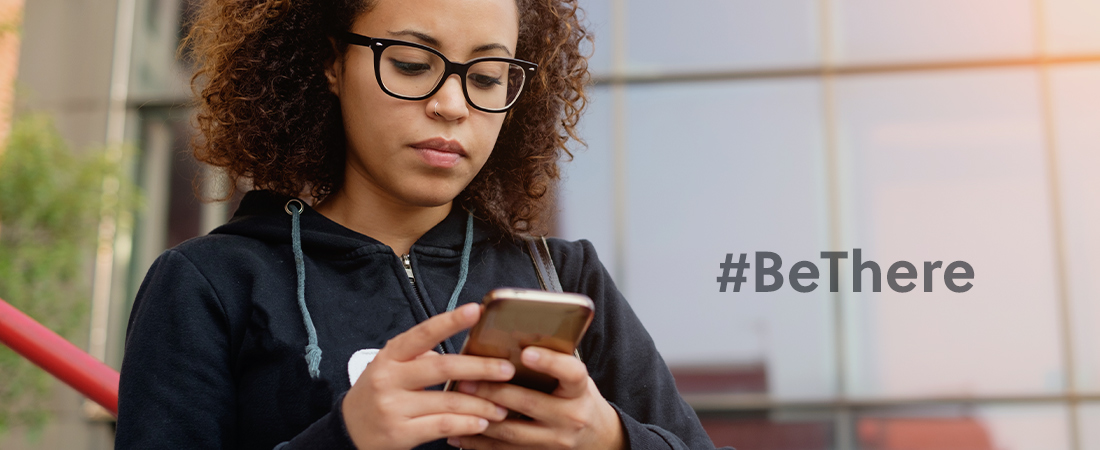4 Things You Can Do to Prevent Suicide

For more ways to help: Visit SPRC’s Suicide Prevention Month: Ideas for Action.
For you or someone you know who is in a suicidal crisis:
- Call the National Suicide Prevention Lifeline at 1-800-273-TALK (1-800-273-8255)
- Visit www.suicidepreventionlifeline.org
- Contact the Crisis Text Line by texting TALK to 741741
For emotional support related to COVID-19:
- Call the Disaster Distress Helpline (800-985-5990)
- Text TalkWithUs to 66746
For those who identify as part of the LGBTQ community:
- Call the TrevorLifeline (866-488-7386)
- Text START to 678-678
For veterans:
- Call the Veterans Crisis Line: 800-273-8255, press 1
- Text 838255
For frontline workers:
- Text FRONTLINE to 741741
There’s a growing public awareness that suicide is preventable. And although most people want to help, many do not know what to do or say.
A recent survey from the National Action Alliance for Suicide Prevention (Action Alliance) shows that 93 percent of Americans believe suicide can be prevented, and 95 percent would do something if they knew someone in crisis. However, 7 out of 10 respondents identified barriers preventing them from discussing suicide with others—including not knowing what to say.
That’s one reason why the Action Alliance has aligned with partners across the United States to promote the #BeThere campaign. This initiative provides resources to educate the public about the many ways they can take action to support a person who is struggling or in crisis.
“People often think that mental health providers should be responsible for preventing suicides,” says Kerri Nickerson, director of state and community initiatives for the Suicide Prevention Resource Center (SPRC) at EDC. “In fact, we all have a role to play.”
In honor of Suicide Prevention Month, here are four steps everyone can take to support those who may be struggling with thoughts of suicide and connect them with the care they need to get better.
1. Learn the warning signs
Suicide often does not come “out of the blue,” so it’s important for friends and family to know what to look out for when a loved one is struggling.
Warning signs for suicide include talking about wanting to die or kill oneself; seeking a means to kill oneself (e.g., searching for a gun online); reckless behavior; and talking about feeling trapped, being in unbearable pain, or being a burden to others. Learning to recognize the warning signs—and being willing to take action—can save lives.
If in doubt, don’t hesitate. Make a call to the National Suicide Prevention Lifeline, which provides 24/7 free confidential support.
“Lifeline counselors can walk through any concerns, either with you or the individual you are concerned about, and help you connect to needed supports,” Nickerson says. “They also have specialized care for military personnel and veterans.”
2. Open the door to discussion
“When you see warning signs, it’s important to ask the person directly whether they have considered suicide,” Nickerson says. “People are sometimes concerned that if they bring up suicide, they might put the idea in someone’s head. But research shows that is not the case. Be direct and upfront. Ask, ‘Are you thinking about hurting yourself?’ Show them you are there to talk about what they’re going through, and be there in the future if they need someone to listen.”
3. Don’t wait to seek help
Sadly, family and friends sometimes wait until a loved one is in crisis—and at risk of immediate suicide—before pursuing help.
“We need to educate the general public about seeking out help earlier, before the problem becomes more serious,” Nickerson says. “Suicide is very complex. It doesn’t have one particular cause. Instead, it’s a constellation of issues that relate between the risk and protective factors in someone’s life. Because of that, it is sometimes hard for people to define when someone has reached the severity that warrants more critical attention.”
According to SPRC, risk factors for suicide include a previous suicide attempt, depression, substance misuse, social isolation, access to lethal means, chronic disease and disability, and lack of access to behavioral health services. Precipitating factors can include the loss of a job, the end of a marriage or a relationship, arrest, and financial troubles.
Nickerson also points to the Substance Abuse and Mental Health Services Administration (SAMHSA) website, which offers a treatment locator. It also features tools and resources to find behavioral health support, including for adults 45 years and older, American Indians and Alaska Natives, and other at-risk populations.
4. Reach out to others in need
The COVID-19 crisis has created a new reality marked by stress, isolation, and uncertainty—making everyday life a challenge for so many. The Census Bureau has recently found that one-third of Americans are showing signs of clinical anxiety and depression during the pandemic. However, one of the protective factors for preventing suicide is social connectedness. We can make sure our friends, family members, and neighbors who may be struggling know they are not alone.
“Think of those who may be isolated, and make an extra effort to reach out to them,” Nickerson says. With social distancing, this can take the form of a FaceTime or Zoom video call, an old-fashioned phone call, a “checking-in” email, or even a friendly card in the mail to say “Hello!”
“We can create these small moments where we’re checking in and saying hello and letting people know that we’re thinking about them,” Nickerson says. “Especially now, this is really important.”
